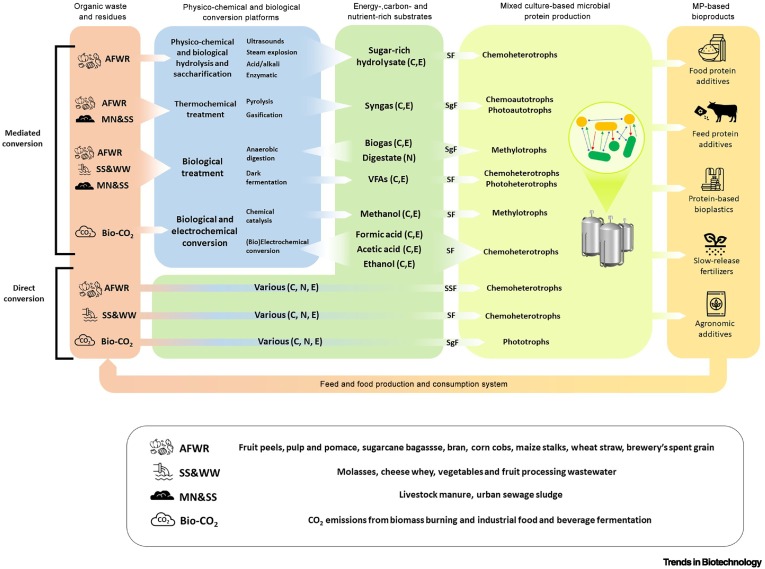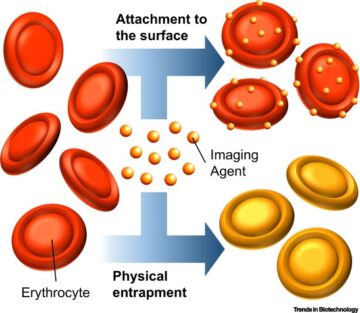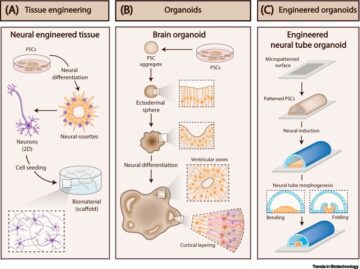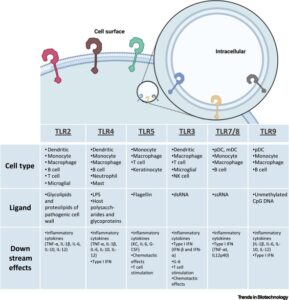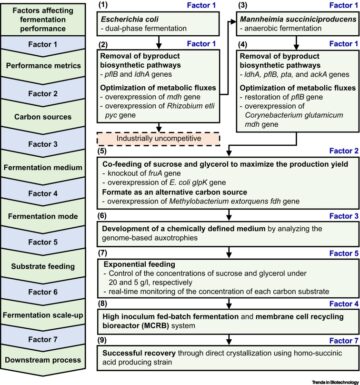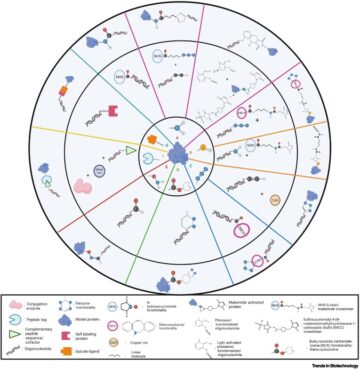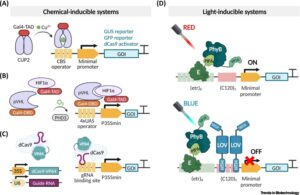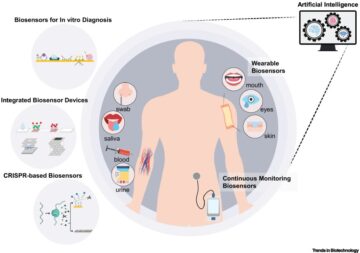
Towards food security: current state and future prospects of agrobiotechnology.
Trends Biotechnol. 2018; 36: 1219-1229
How cropland losses shaped by unbalanced urbanization process?.
Land Use Policy. 2020; 96104715
Creating a Sustainable Food Future. A Menu of Solutions to Sustainably Feed more than 9 Billion People by 2050, World Resources Report 2019.
World Resources Institute, 2019
The Future of Food and Agriculture – Trends and Challenges.
Food and Agriculture Organization of the United Nations, 2017
Future protein supply and demand: strategies and factors influencing a sustainable equilibrium.
Foods. 2017; 6: 53
The world’s growing municipal solid waste: trends and impacts.
Environ. Res. Lett. 2020; 15074021
Current trends in green technologies in food production and processing.
Food Eng. Rev. 2013; 5: 1-17
From linear to circular integrated waste management systems: a review of methodological approaches.
Resour. Conserv. Recycl. 2018; 135: 279-295
Sustainable agriculture options for production, greenhouse gasses and pollution alleviation, and nutrient recycling in emerging and transitional nations – an overview.
J. Clean. Prod. 2020; 242118319
Waste-to-nutrition: a review of current and emerging conversion pathways.
Biotechnol. Adv. 2021; 53107857
Protein Extracts from Single Cell Protein Sources Market by Source, by Application, by Geography – Global Market Size, Share, Development, Growth and Demand Forecast, 2013–2023.
Research and Markets, 2018
Food for thought: the protein transformation.
Ind. Biotechnol. 2021; 17: 125-133
Microbial protein: future sustainable food supply route with low environmental footprint.
Microb. Biotechnol. 2016; 9: 568-575
Microbes and the next nitrogen revolution.
Environ. Sci. Technol. 2017; 51: 7297-7303
Mixed consortia in bioprocesses: role of microbial interactions.
Appl. Microbiol. Biotechnol. 2016; 100: 4283-4295
Synthetic co-cultures: novel avenues for bio-based processes.
Curr. Opin. Biotechnol. 2021; 67: 72-79
Environmental life cycle assessment of different biorefinery platforms valorizing municipal solid waste to bioenergy, microbial protein, lactic and succinic acid.
Renew. Sust. Energ. Rev. 2020; 117109493
Towards new carbon-neutral food systems: combining carbon capture and utilization with microbial protein production.
Bioresour. Technol. 2022; 349126853
Upcycling of biowaste carbon and nutrients in line with consumer confidence: the ‘full gas’ route to single cell protein.
Green Chem. 2020; 22: 4912-4929
Urban biowaste valorization by coupling anaerobic digestion and single cell protein production.
Bioresour. Technol. 2019; 290121743
Microbial protein: a valuable component for future food security.
in: Singh J.S. Singh D.P. Microbes and Environmental Management. Studium Press, 2016: 260-279
Single cell protein: production and process.
Am. J. Food Technol. 2011; 6: 103-116
Decoupling livestock from land use through industrial feed production pathways.
Environ. Sci. Technol. 2018; 52: 7351-7359
Single cell protein: a resort to global protein challenge and waste management.
J. Microbiol. Microb. Technol. 2016; 1: 5
Direct nitrogen stripping and upcycling from anaerobic digestate during conversion of cheese whey into single cell protein.
Bioresour. Technol. 2022; 358127308
Bioconversion of apple pomace into microbial protein feed based on extrusion pretreatment.
Appl. Biochem. Biotechnol. 2021; 194: 1496-1509
Solid state fermentation of food waste mixtures for single cell protein, aroma volatiles and fat production.
Food Chem. 2014; 145: 710-716
Microbial community-based protein production from wastewater for animal feed applications.
Bioresour. Technol. 2021; 341125723
Purple non-sulphur bacteria and plant production: benefits for fertilization, stress resistance and the environment.
Microb. Biotechnol. 2020; 13: 1336-1365
Bio-electrochemically extracted nitrogen from residual resources for microbial protein production.
Bioresour. Technol. 2021; 337125353
Simultaneous treatment and single cell protein production from agri-industrial wastewaters using purple phototrophic bacteria or microalgae – a comparison.
Bioresour. Technol. 2018; 254: 214-223
Microbial protein production from methane via electrochemical biogas upgrading.
Chem. Eng. J. 2020; 391123625
Single cell protein production from food waste using purple non-sulfur bacteria shows economically viable protein products have higher environmental impacts.
J. Clean. Prod. 2020; 276123114
Economic comparison of food protein production with single-cell organisms from lignocellulose side-streams.
Bioresour. Technol. Rep. 2021; 14100683
Fixation of carbon dioxide by a hydrogen-oxidizing bacterium for value-added products.
World J. Microbiol. Biotechnol. 2018; 34: 89
Making the case for edible microorganisms as an integral part of a more sustainable and resilient food production system.
Food Secur. 2019; 11: 265-278
Methane oxidising bacteria to upcycle effluent streams from anaerobic digestion of municipal biowaste.
J. Environ. Manag. 2019; 251109590
Sulfide restrains the growth of Methylocapsa acidiphila converting renewable biogas to single cell protein.
Water Res. 2020; 184116138
Biogas upgrading and valorization to single-cell protein in a bioinorganic electrosynthesis system.
Chem. Eng. J. 2021; 426131837
Assessing the potential for up-cycling recovered resources from anaerobic digestion through microbial protein production.
Microb. Biotechnol. 2021; 14: 897-910
Power-to-protein: converting renewable electric power and carbon dioxide into single cell protein with a two-stage bioprocess.
Energy Environ. Sci. 2019; 12: 3515-3521
Autotrophic nitrogen assimilation and carbon capture for microbial protein production by a novel enrichment of hydrogen-oxidizing bacteria.
Water Res. 2016; 101: 137-146
Photovoltaic-driven microbial protein production can use land and sunlight more efficiently than conventional crops.
Proc. Natl. Acad. Sci. U. S. A. 2021; 118e2015025118
Stochasticity in microbiology: managing unpredictability to reach the Sustainable Development Goals.
Microb. Biotechnol. 2020; 13: 829-843
Principles for designing synthetic microbial communities.
Curr. Opin. Microbiol. 2016; 31: 146-153
Emerging strategies for engineering microbial communities.
Biotechnol. Adv. 2019; 37107372
Co-culture: a great promising method in single cell protein production.
Biotechnol. Mol. Biol. Rev. 2014; 9: 12-20
Enrichment of hydrogen-oxidizing bacteria with nitrate recovery as biofertilizers in the mixed culture.
Bioresour. Technol. 2020; 313123645
Heterotrophic bacteria growing in association with Methylococcus capsulatus (Bath) in a single cell protein production process.
Appl. Microbiol. Biotechnol. 2002; 59: 33-39
Bioconversion of wastewater to single cell protein by methanotrophic bacteria.
Bioresour. Technol. 2021; 320124351
The more, the merrier: heterotroph richness stimulates methanotrophic activity.
ISME J. 2014; 8: 1945-1948
Enhanced production of single cell protein from M. capsulatus (Bath) growing in mixed culture.
J. Microbiol. Biotechnol. Food Sci. 2016; 6: 894-899
From biogas and hydrogen to microbial protein through co-cultivation of methane and hydrogen oxidizing bacteria.
Front. Bioeng. Biotechnol. 2021; 9: 1-17
Conversion of biogas to bioproducts by algae and methane oxidizing bacteria.
Environ. Sci. Technol. 2012; 46: 13425-13431
A microalgae-methanotroph coculture is a promising platform for fuels and chemical production from wastewater.
Front. Energy Res. 2020; 8: 1-14
Co-cultivation enhanced microbial protein production based on autotrophic nitrogen-fixing hydrogen-oxidizing bacteria.
Chem. Eng. J. 2021; 429132535
Cocultivating aerobic heterotrophs and purple bacteria for microbial protein in sequential photo- and chemotrophic reactors.
Bioresour. Technol. 2021; 319124192
Mixed culture of Kluyveromyces marxianus and Candida krusei for single-cell protein production and organic load removal from whey.
Bioresour. Technol. 2014; 164: 119-127
Isolation and identification of flower yeasts for the development of mixed culture to produce single-cell protein from waste milk.
Bioresour. Technol. Rep. 2020; 10100401
Production of peptides and amino acids from microbial biomass in food and feed industries: biotechnological aspects.
Foods Raw Mater. 2020; 8: 268-276
Microbial protein enrichment and treatment of winery residue from fungi and yeast by syntrophic fermentation.
IOP Conf. Ser. Earth Environ. Sci. 2018; 171012035
Bioconversion of yellow wine wastes into microbial protein via mixed yeast-fungus cultures.
Bioresour. Technol. 2020; 299122565
Single cell protein (SCP) production and potential substrates: a comprehensive review.
Pure Appl. Biol. 2020; 9: 1743-1754
The mixed culture of microalgae Chlorella pyrenoidosa and yeast Yarrowia lipolytica for microbial biomass production.
Bioprocess Biosyst. Eng. 2019; 42: 1409-1419
Microbes: food for the future.
Foods. 2021; 972: 13-14
Biofloc technology as a promising tool to improve aquaculture production.
Rev. Aquac. 2020; 12: 1836-1850
Engineering the Dark Food Chain.
Environ. Sci. Technol. 2019; 53: 2273-2287
Resource recovery from used water: the manufacturing abilities of hydrogen-oxidizing bacteria.
Water Res. 2015; 68: 467-478
Potential of microbial protein from hydrogen for preventing mass starvation in catastrophic scenarios.
Sustain. Prod. Consum. 2021; 25: 234-247
Alternative proteins and EU food law.
Food Control. 2021; 130108336
Directive 2002/32/EC of The European Parliament and of the Council of 7 May 2002 on Undesirable Substances in Animal Feed.
European Parliament, 2002
Regulation (EC) No 767/2009 of the European Parliament and of the Council of 13 July 2009 on the Placing on the Market and Use of Feed.
European Parliament, 2009
Commission Regulation (EU) No 68/2013 of 16 January 2013 on the Catalogue of Feed Materials.
European Parliament, 2013
Regulation (EU) 2015/2283 of the European Parliament and of the Council of 25 November 2015 on Novel Foods, Amending Regulation (EU) No 1169/2011 of the European Parliament and of the Council and Repealing Regulation (EC) No 258/97 etc.
European Parliament, 2015
Storage, fertilization and cost properties highlight the potential of dried microbial biomass as organic fertilizer.
Microb. Biotechnol. 2020; 13: 1377-1389
Carbon emission avoidance and capture by producing in-reactor microbial biomass based food, feed and slow release fertilizer: potentials and limitations.
Sci. Total Environ. 2018; 644: 1525-1530
Biofertilizers from Rhodopseudomonas palustris strains to enhance rice yields and reduce methane emissions.
Appl. Soil Ecol. 2016; 100: 154-161
Revisiting the single cell protein application of Cupriavidus necator H16 and recovering bioplastic granules simultaneously.
PLoS ONE. 2013; 8: 1-15
Novel bioplastic from single cell protein as a potential packaging material.
ACS Sustain. Chem. Eng. 2021; 9: 6337-6346
Improving the integrity of natural biopolymer films used in food packaging by crosslinking approach: a review.
Int. J. Biol. Macromol. 2017; 104: 687-707
Biodegradable biocomposite films based on whey protein and zein: barrier, mechanical properties and AFM analysis.
Int. J. Biol. Macromol. 2008; 43: 209-215
Single cell protein—state-of-the-art, Industrial landscape and patents 2001–2016.
Front. Microbiol. 2017; 8: 2009
Value-added food: single cell protein.
Biotechnol. Adv. 2000; 18: 459-479
Environmental impact of microbial protein from potato wastewater as feed ingredient: comparative consequential life cycle assessment of three production systems and soybean meal.
Water Res. 2020; 171115406
Single cell protein: a potential substitute in human and animal nutrition.
Sustainability. 2021; 13: 9284
Solid-state fermentation — are there any biotechnological advantages?.
Curr. Opin. Microbiol. 2005; 8: 301-306
Single cell protein: sources, mechanism of production, nutritional value and its uses in aquaculture nutrition.
Aquaculture. 2021; 531735885
Microalgae as a potential source of single-cell proteins. A review.
Biotechnol. Agron. Soc. Environ. 2016; 20: 427-436
Recent advances in single cell protein use as a feed ingredient in aquaculture.
Curr. Opin. Biotechnol. 2020; 61: 189-197
Purple bacteria as added-value protein ingredient in shrimp feed: Penaeus vannamei growth performance, and tolerance against Vibrio and ammonia stress.
Aquaculture. 2021; 530735788
Can direct conversion of used nitrogen to new feed and protein help feed the world?.
Environ. Sci. Technol. 2015; 49: 5247-5254
The aerobic methane oxidizing bacteria (Methanotrophs).
in: Timmis K.N. Handbook of Hydrocarbon and Lipid Microbiology. Springer, 2010: 1954-1966
CO2 fixation by anaerobic non-photosynthetic mixotrophy for improved carbon conversion.
Nat. Commun. 2016; 7: 12800
Autotrophic, heterotrophic, and mixotrophic nitrogen assimilation for single-cell protein production by two hydrogen-oxidizing bacterial strains.
Appl. Biochem. Biotechnol. 2010; 187: 338-351
Comparison of pretreatments and cost-optimization of enzymatic hydrolysis for production of single cell protein from grass silage fibre.
Bioresour. Technol. Rep. 2020; 9100357
Proteinaceous methanotrophs for feed additive using biowaste as carbon and nutrients source.
Bioresour. Technol. 2020; 313123646
- SEO Powered Content & PR Distribution. Get Amplified Today.
- Platoblockchain. Web3 Metaverse Intelligence. Knowledge Amplified. Access Here.
- Source: https://www.cell.com/trends/biotechnology/fulltext/S0167-7799(22)00177-9?rss=yes
- 1
- 2019
- 7
- 9
- a
- abilities
- activity
- advances
- advantages
- against
- agriculture
- analysis
- and
- animal
- Apple
- Application
- applications
- approach
- approaches
- aspects
- assessment
- Association
- authors
- Bacteria
- barrier
- based
- benefits
- Billion
- biomass
- capture
- carbon
- carbon capture
- carbon dioxide
- case
- catastrophic
- chain
- challenge
- challenges
- chemical
- combining
- commission
- Communities
- comparison
- component
- comprehensive
- confidence
- consortia
- consumer
- control
- conventional
- Conversion
- Cost
- Council
- crops
- Culture
- Current
- Current state
- Dark
- Demand
- designing
- Development
- different
- direct
- during
- earth
- EC
- edible
- efficiently
- Electric
- emerging
- emission
- Emissions
- energy
- Engineering
- enhanced
- Environment
- environmental
- Equilibrium
- etc
- EU
- European
- European Parliament
- european union
- Extracts
- factors
- Fat
- films
- flower
- food
- Food and Agriculture
- food supply
- foods
- Footprint
- Forecast
- from
- future
- Future of Food
- geography
- Global
- global market
- Goals
- great
- Green
- Growing
- Growth
- help
- higher
- Highlight
- HTTPS
- human
- hydrogen
- Identification
- Impact
- Impacts
- improve
- improved
- in
- industrial
- industries
- influencing
- integral
- integrated
- integrity
- interactions
- January
- July
- Land
- landscape
- Law
- Life
- limitations
- Line
- List
- load
- losses
- Low
- management
- managing
- manufacturing
- Market
- Markets
- Mass
- material
- materials
- mechanical
- mechanism
- Menu
- methane
- methane emissions
- method
- microbiology
- Milk
- mixed
- MOL
- more
- municipal
- Nations
- Natural
- New
- next
- novel
- November
- nutrition
- ONE
- Options
- organic
- organization
- overview
- packaging
- parliament
- part
- Patents
- People
- performance
- placing
- platform
- Platforms
- plato
- Plato Data Intelligence
- PlatoData
- policy
- Pollution
- potential
- power
- preventing
- process
- processes
- processing
- produce
- Production
- Products
- promising
- properties
- prospects
- Protein
- Proteins
- Raw
- reach
- recovering
- recovery
- recycling
- reduce
- Regulation
- release
- removal
- Renewable
- report
- resilient
- Resistance
- Resort
- Resources
- review
- Revolution
- Rice
- Role
- Route
- scenarios
- SCI
- security
- shaped
- Share
- Shows
- simultaneously
- single
- Size
- slow
- solid
- Solutions
- Source
- Sources
- State
- stimulates
- Strains
- strategies
- streams
- stress
- stripping
- sunlight
- supply
- Supply and Demand
- sustainable
- synthetic
- system
- Systems
- Technologies
- Technology
- The
- The Future
- the world
- thought
- three
- Through
- to
- tolerance
- tool
- Total
- Transformation
- treatment
- Trends
- union
- United
- use
- Valuable
- value
- via
- viable
- W
- Waste
- Water
- WINE
- world
- world’s
- X
- yields
- zephyrnet

